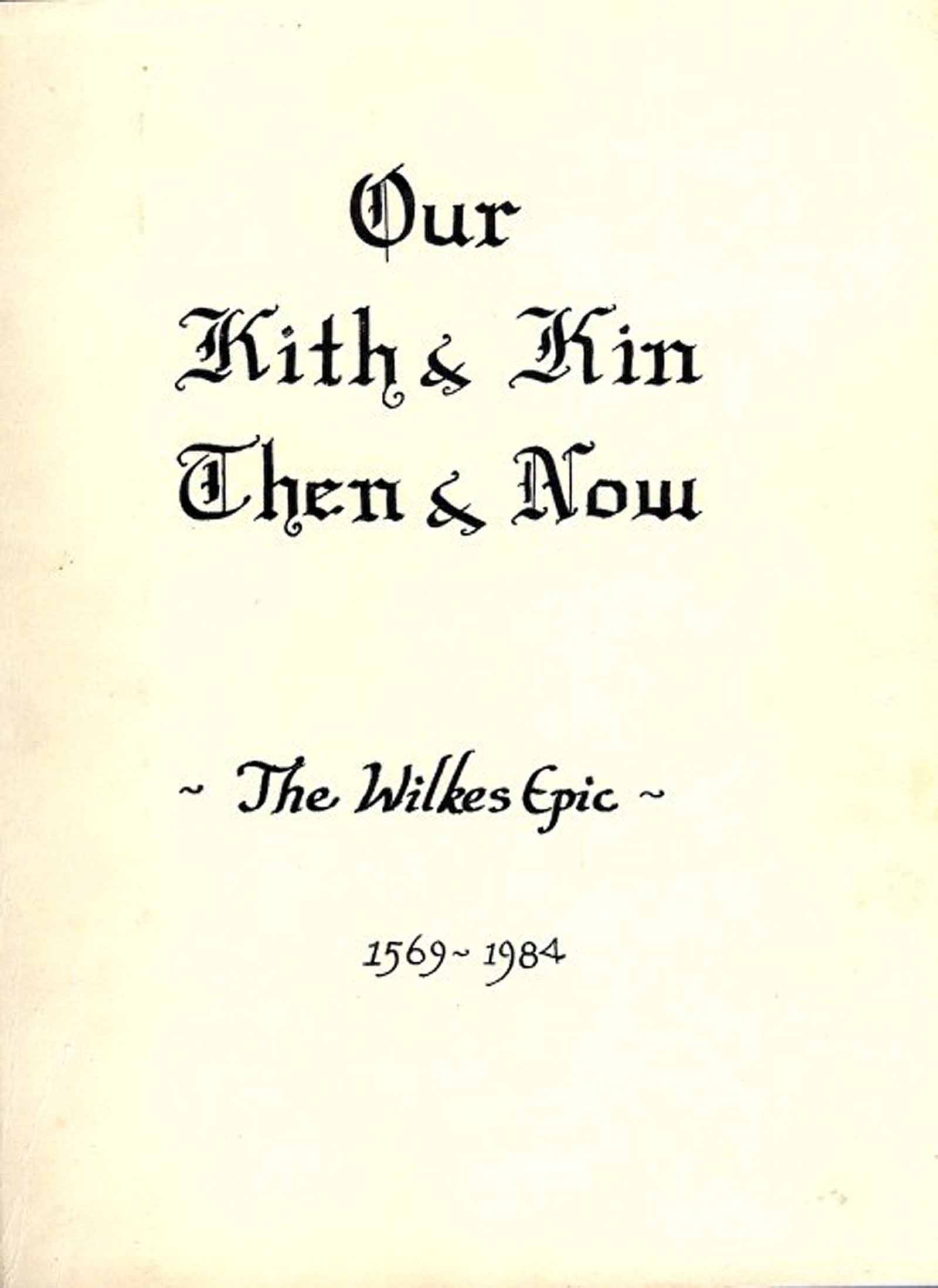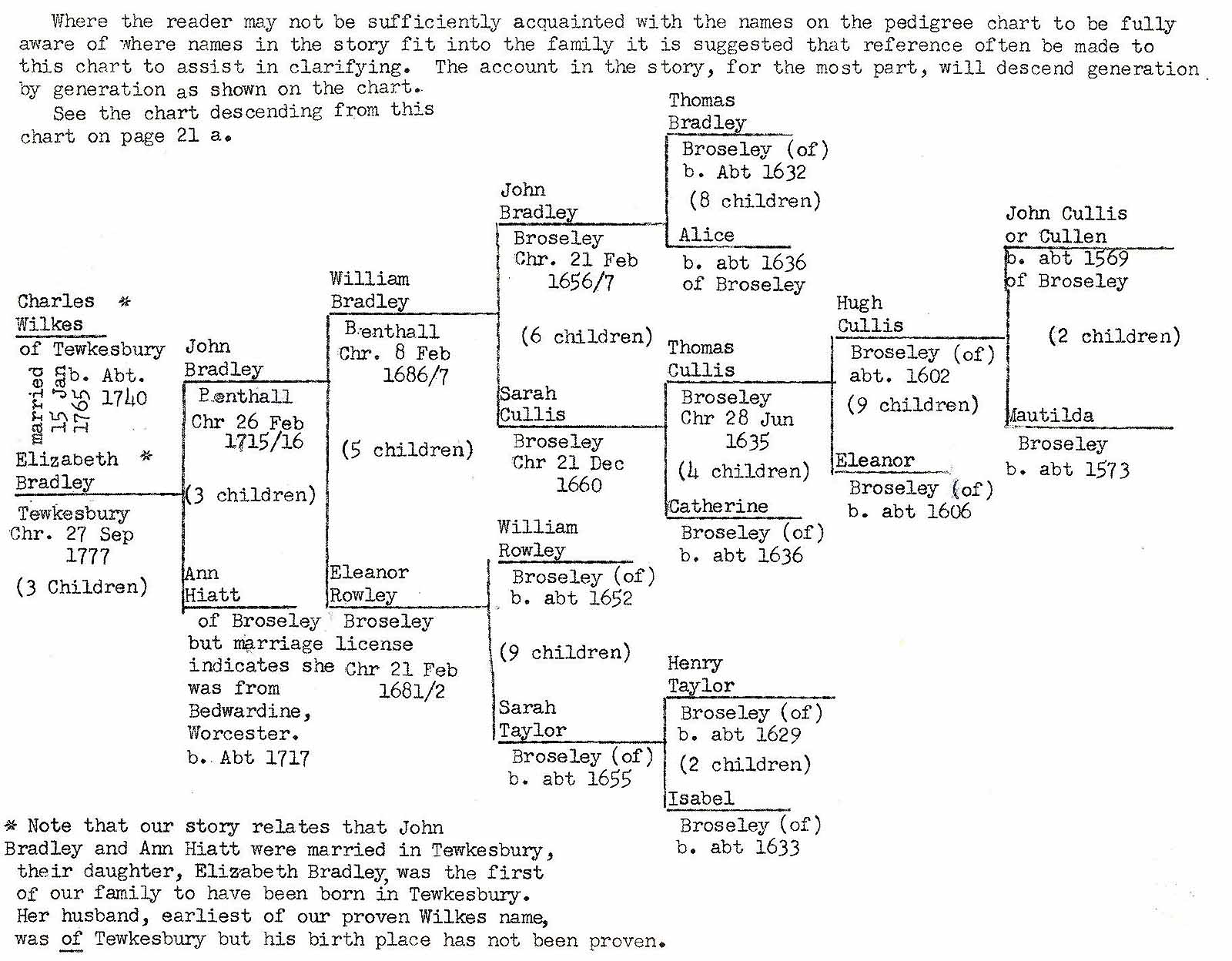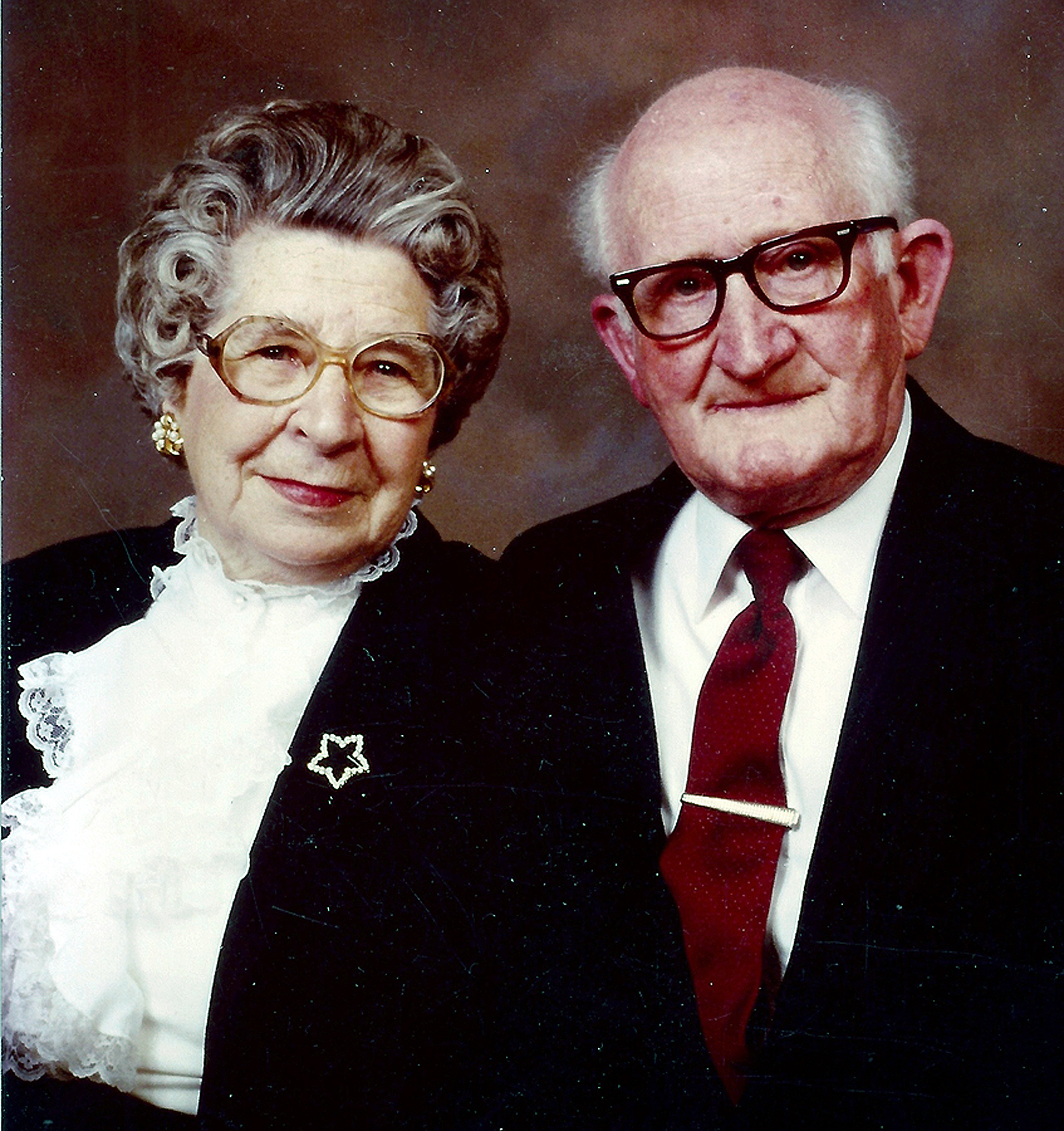

To gather the story of our ancestry has been a goal of this writer since young manhood even before my parents' letter prior to my return from my British mission in which they advised they would provide an extra monthly check for me to travel to the family's ancestral towns, villages and country side in search of family history and genealogy, particularly the latter, for at that time in February of 1920, the family's pedigree was not all extensive.
What an assignment! I thrilled with it, nor did I fully realize at the time my inadequacy. The story is too long to attempt to relate it here, but that short visit started a spark in my heart and mind, which has never been extinguished.
At a John Wilkes Family Organization meeting on the shores of beautiful Bear Lake in the early 1920s, that spark had additional kindling added by an assignment from the family to direct special effort in family research. Also, as first counselor in our stake's Genealogical Committee, as it was then known, and, quite ironically, I estimate fully 95% of my church activity to this date - and it has been constant thru the years - has been genealogically oriented. Why I have been so favored by my family and Church I don't fully know, but it has been deeply appreciated.
My visit to Gloucestershire (pronounced Glostershire) and specifically to Tewkesbury, the ancestral home of our earliest Wilkes' families, has been meaningful to my later dealing with records from that area. I can actually visualize the great Tewkesbury Abbey into which I was invited by the churchyard sexton and in which churchyard I found tombstones of some of our ancestral family including, especially, that stone at the head of the grave of my 2nd great-grandparents, William and Elizabeth Hunt Wilkes.
As the accompanying Wilkes family pedigree shows, the Wilkes name extends back but approximately half way on the chart, from which point my 4th great grandmother, Elizabeth Bradley's family extends another six generations. The fact that these other surnames than the Wilkes surname, appear on our chart indicates they are as much ancestral as is the Wilkes' name.
A special effort has been made in compiling this family history that the account be not directed solely, nor to a major extent, to genealogical data only at the expense of history as such, which is so often done in many family histories. Genealogical data, including nothing more than names of people, places, dates of birth, marriage and deaths, can become trite and boring to one who is not especially interested in such facts. Hopefully, the reader will find sufficient history - accounts of the lives of the people with whom we are dealing - to make interesting reading.
This family need not be ashamed of its roots. Fortunately, we don't have to depend on our ancestry stemming from royalty, in order to make the story interesting. By today's standards, the most of us and, almost certainly the generations from which we spring, can well be classified as having lived below the poverty level so far as out economy is concerned. But in every other sense, out ancestry has been special - and who knows but those below poverty levels are the more fortunate ones of our society? We will not be wrong by designating our ancestral families as, literally, the 'salt of the earth'.
Their "time on earth" fell into periods of time when it was not easy to even survive, let alone enjoy many luxuries, at least luxuries as we know them today. Many of the generations with whom we are dealing had as many as half their children taken to the cemetery before they reached five years of age. And on the other hand, children lost their parents when the parents were yet, age-wise, in their prime years. From this our families were not immune.
At the outset, I was well aware there was a great deal of family history to cover in this story. Our earliest known and proven ancestor was born about 1569 - well over four hundred years ago. It has been but a few years since we celebrated the 200th anniversary of our country, and even by our timing the Declaration of Independence was not that recent. To think of our family history going back twice that length of time, can give us an appreciation of the amount of family history which has passed and of which we are attempting to cover.
While it is true we may not have a great deal of personal history stemming back that distance in time, yet there is more to write about than probably a casual observer will fully realize. Certainly, in our family, by the time we come down to the last of the 1700s and throughout the entirety of the history, there is considerable personal history as the reader will recognize when reading the story.
Hopefully, our modern day family - the last couple generations - will not be overly offended by finding themselves quite ignored in this history. Simply put, there is just too much history to include us all in one volume. I am sure this will be understandable to you of the modern generations. You deserve a history of your own - a family history in which you are included. Perhaps your parents, in a family home evening meeting, will suggest that you commence such a family history, and that it be started now, not waiting until you ready to be taken 'out on the hill'.
Hopefully, the history of this volume will start an acquaintance with out ancestry. They did much for us by way of preparation for our time, and we each owe them a debt which, if we cannot pay by monetary values, we will be able to partially pay in sincere gratitude.
Of all the reasons which call for a great deal of appreciation, should be the fact that our American-based Hunt family in 1841, our Welsh-based Eynon family in 1843, and our Gloucestershire-based Wilkes family in 1848, each unknown to the other, had the courage to accept the message of Mormon missionaries. That message was that the God of Heaven revealed His true nature, and through revelation, restored the office of prophets and apostles through which the true Church of Jesus Christ was again organized, and through which, and only through which, mankind could return to the presence of God.
This step taken by each of our three aforementioned families, was a very serious step, taken by them, for us. Their lives were never the same following that step. From that point on, their lives became lives of sacrifice. Indeed, their adhering to the counsel of the Church, they each, in their turn, found themselves migrating to America and on to Utah, to the central body of the Church's membership. The cost of this move was, at least, five human lives. Of our ancestral families - two Eynons, and two Hunts, were buried somewhere along the route between their original homes and their destinations. One was buried in the Atlantic, and one young missionary of the Hunt family, was shot and killed by an Indian brave while serving on his mission.
Hardships and deprivations on the part of those who did reach the west, are only partially touched upon in this history. These three mentioned families, through later marriages, found themselves together, as being among the very first families to settle in the Bear Lake area and subsequently, their children to be among the very first settlers of Star Valley, Wyoming.
The resolve of each and every one of us should be one of sincere gratitude.
 Mabel and Loyn Blacker
Mabel and Loyn Blacker
And now, to the present. To make this book possible, it has required cooperation from any number of you good folk. You have supplied the several stories and the many pages of information for charts of the families descending from the John Wilkes and Martha Elizabeth Hunt family. The purpose for the histories and charts is that each of us can become better acquainted with our Kith and Kin, Then and Now, than we have ever been before. Hopefully, the arrangement will not be difficult to place them in proper perspective by the reader.
Errors have not purposefully been made. Some may be found, and it will be to those affected that we apologize. In all honesty, they were not intentionally made. Dealing with so many names, so many dates, so many places and to which families they belong, has been a challenge, but an interesting one.
In any family history, and with any family's genealogy, there will inevitably appear differences - some more serious than others - but none are so serious that family disagreements should cause animosities. Careful documentation is always suggested. All too often, complete documentation is hard to come by and we can only do the best we can do. The objectives of genealogical research are simply to identify, usually, an individual. A date of birth is but one means and one means only. If there be conflict here, then there are other means of identification, such as the name of the parents, and the names of his brothers and sisters. So long as the individual is recognized as a member of the family, what difference will it make if John is born on the 5th of July or the 25th? He has an identity within the family, and that becomes the important factor. In case a difference cannot be rectified, and it is felt important, it may be wise to use both dates or both names or, whatever. A number of such situations will show up in this history, but an effort has been made to document. Granted, there are exceptions still needing further research. Please don't let it try your souls if you disagree.
Appreciation is extended to my immediate family, to my wife, children and grandchildren. It is all too possible - and probably - that in one manner or another, they have been neglected. My life of genealogy research and history writing, undoubtedly, has taken time from them. If it has proven serious, I am hopeful they will have a forgiving nature. On the other hand, I have realized the great amount of encouragement they have each offered. They have all been choice family associates.
Thanks to daughter Beth's talents in designing the cover, and to daughter Lois for assisting with the binding. Most of all, thanks to you for your continued encouragement after you learned that I was in the process of writing this history. Hopefully, you will not be disappointed.
Loyn Blacker
30 November 1984
905 E. Street Rupert, Idaho, 83350
In 1984, my father, Loyn Blacker completed compiling information he had researched for over fifty years, concerning the ancestry of his father, Thomas Blacker, and his mother, Hettie May Wilkes. The results were published in two volumes, entitled: Kith and Kin Then and Now, the Wilkes Epic, and Kith and Kin Then and Now, the Wilkes Epic. These were distributed to various family members at that time.
Over the years, the posterity of Thomas and Hettie Blacker has increased to the extent that concerns have arisen over the fact that many of the later family members have no idea of the information available in these two volumes. The expense of re-publishing would be prohibitive, and so that these valuable works would not be lost, an effort was made to use modern technology to make them available.
Because of the quality of print, it has been necessary to key both volumes into the computer, and to when at all possible, locate original photographs and scan them to improve the images. Most of the charts have been scanned from the originals that Loyn typed on his typewriter with great care.
There has been new information located over the years, and trips to England and Wales have resulted in pictures of family interest that were taken very recently.
Since Mabel, Loyn's wife was always supportive and helpful in this great endeavor, they as a team, share the credit for this work.
It is hoped that the family will find these volumes of great worth, and that the stories and pictures will bring to life, all those who went before and prepared the way for each of us.
Ruth Blacker Waite